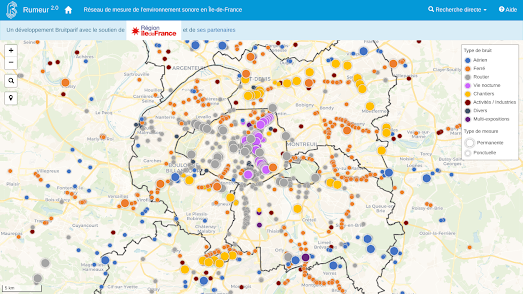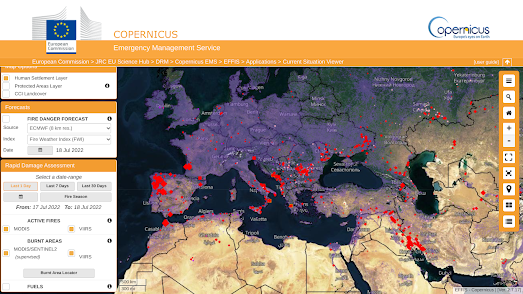The Bruitparif Paris Transport Noise Map visualizes noise pollution within the Île-de-France region. The map shows the estimated level of noise pollution generated by cars, trains and planes across all of Paris.
Essentially the Paris Transport Noise Map provides a heat map view of the levels of transport noise in the capital. The map allows you to view noise pollution generated by cars, trains, planes, or a cumulative noise pollution visualization of all three combined. The noise pollution levels are determined by computer modeling and not from actual measurements.
The main criticism of computer modeled maps of noise pollution is that they are little more than maps of transport infrastructure. However when done well, like the Paris Transport Noise Map, they take into account the effect of buildings, noise screens, traffic levels, average speeds and road surfaces on the amount of noise pollution generated.
Bruitparif actually has deployed sound radars which capture noise pollution levels across the French capital in real-time. You can view the noise pollution levels recorded by these sound radars on its Rumeur interactive map.
The Rumeur map allows you to view the sound levels recorded by any of the sound measuring stations in Paris. Click on a sound radar's marker on the map and you can view its current 'real-time' noise pollution reading and its measurement history. An interactive chart allows you to observe the selected station's entire history of decibel level measurements.
If you don't live in Paris you can view noise pollution levels where you live on the OSM Global Noise Pollution Map. The
OSM Global Noise Pollution Map uses OpenStreetMap data to estimate the levels of noise pollution across the world.
At the heart of the OSM Global Noise Pollution Map is the simple idea of assigning noise pollution levels based on OpenStreetMap tags.
Map features in OpenStreetMap are assigned a tag which describe what has been mapped. These tags can also be assigned a value. For example all roads that are tagged 'highway' are also assigned a value such as 'motorway', 'secondary' or 'residential'.
The OSM Global Noise Pollution Map uses these tags and values to assign a noise pollution level based on general assumptions. For example highway, trunk, primary and secondary roads are deemed to be noisier than normal street or service roads. The OSM Global Noise Pollution Map also assumes that other mapped features, such as railways and retail & industrial zones, will also generate different levels of noise pollution.
The OSM Global Noise Pollution Map isn't refined enough to take into account factors such as traffic levels & average speeds.



















































